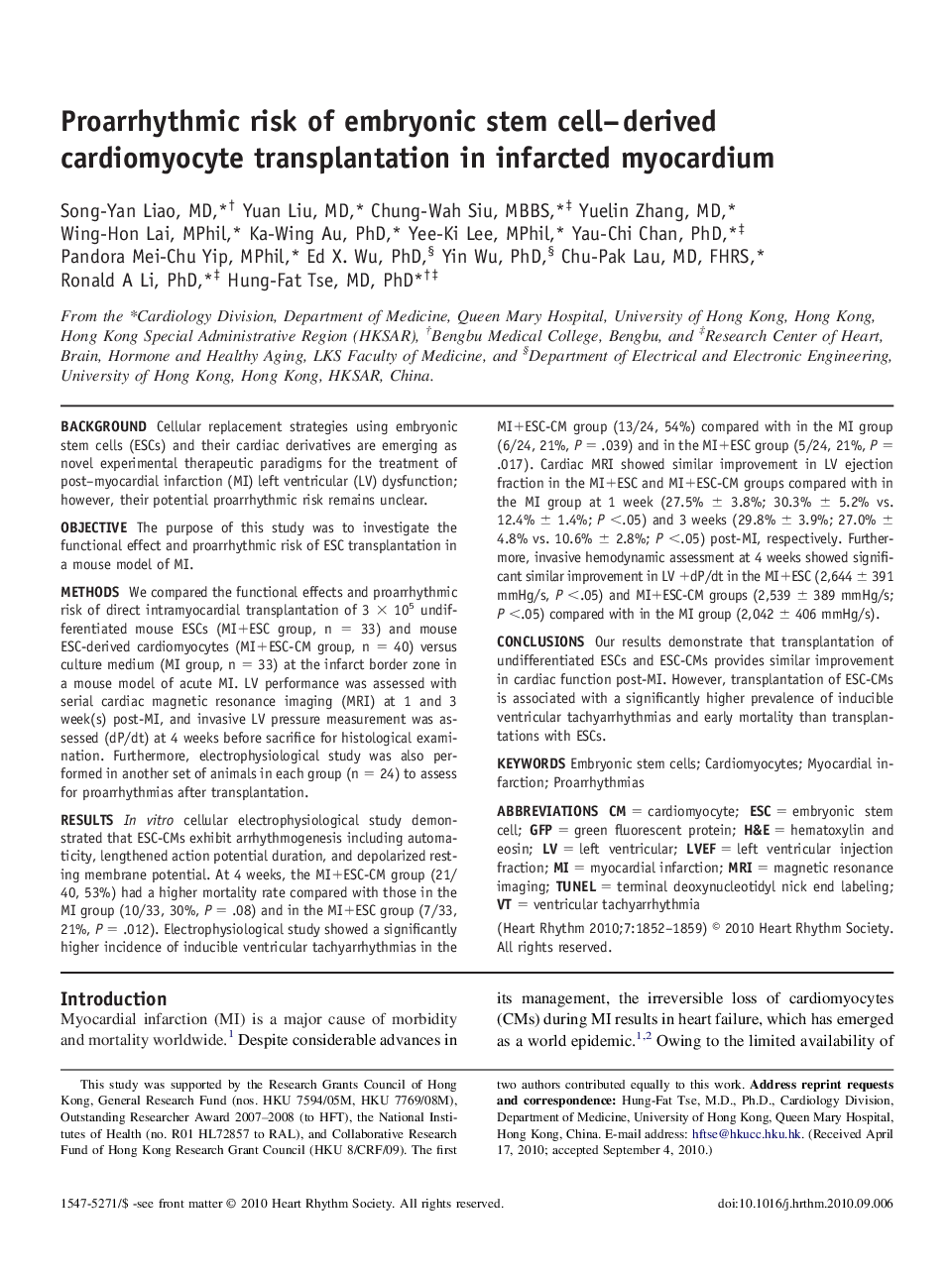| Article ID | Journal | Published Year | Pages | File Type |
|---|---|---|---|---|
| 2923181 | Heart Rhythm | 2010 | 8 Pages |
BackgroundCellular replacement strategies using embryonic stem cells (ESCs) and their cardiac derivatives are emerging as novel experimental therapeutic paradigms for the treatment of post–myocardial infarction (MI) left ventricular (LV) dysfunction; however, their potential proarrhythmic risk remains unclear.ObjectiveThe purpose of this study was to investigate the functional effect and proarrhythmic risk of ESC transplantation in a mouse model of MI.MethodsWe compared the functional effects and proarrhythmic risk of direct intramyocardial transplantation of 3 × 105 undifferentiated mouse ESCs (MI+ESC group, n = 33) and mouse ESC-derived cardiomyocytes (MI+ESC-CM group, n = 40) versus culture medium (MI group, n = 33) at the infarct border zone in a mouse model of acute MI. LV performance was assessed with serial cardiac magnetic resonance imaging (MRI) at 1 and 3 week(s) post-MI, and invasive LV pressure measurement was assessed (dP/dt) at 4 weeks before sacrifice for histological examination. Furthermore, electrophysiological study was also performed in another set of animals in each group (n = 24) to assess for proarrhythmias after transplantation.ResultsIn vitro cellular electrophysiological study demonstrated that ESC-CMs exhibit arrhythmogenesis including automaticity, lengthened action potential duration, and depolarized resting membrane potential. At 4 weeks, the MI+ESC-CM group (21/40, 53%) had a higher mortality rate compared with those in the MI group (10/33, 30%, P = .08) and in the MI+ESC group (7/33, 21%, P = .012). Electrophysiological study showed a significantly higher incidence of inducible ventricular tachyarrhythmias in the MI+ESC-CM group (13/24, 54%) compared with in the MI group (6/24, 21%, P = .039) and in the MI+ESC group (5/24, 21%, P = .017). Cardiac MRI showed similar improvement in LV ejection fraction in the MI+ESC and MI+ESC-CM groups compared with in the MI group at 1 week (27.5% ± 3.8%; 30.3% ± 5.2% vs. 12.4% ± 1.4%; P <.05) and 3 weeks (29.8% ± 3.9%; 27.0% ± 4.8% vs. 10.6% ± 2.8%; P <.05) post-MI, respectively. Furthermore, invasive hemodynamic assessment at 4 weeks showed significant similar improvement in LV +dP/dt in the MI+ESC (2,644 ± 391 mmHg/s, P <.05) and MI+ESC-CM groups (2,539 ± 389 mmHg/s; P <.05) compared with in the MI group (2,042 ± 406 mmHg/s).ConclusionsOur results demonstrate that transplantation of undifferentiated ESCs and ESC-CMs provides similar improvement in cardiac function post-MI. However, transplantation of ESC-CMs is associated with a significantly higher prevalence of inducible ventricular tachyarrhythmias and early mortality than transplantations with ESCs.
